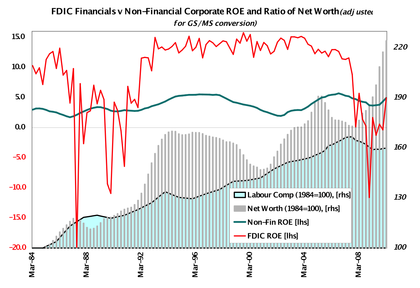Neo-classical economists underestimate the importance of the link between savings and investment. The two should be regarded as linked together: you need savings to be available for investment in new production for the future.
This causes no concern to mainstream economists. Instead they advocate that savings should support government spending, rather than paying down consumer debt. They regard the second option as recessionary folly. Meanwhile they believe investment can be stimulated through low interest rates with a helping hand from government. The effect of our current predicament in most advanced economies has been to separate savings from industrial investment. This is unwise.
Healthy economies depend on the right mix of consumer demand and capital investment. You can carry on with the provision of currently available goods and services only to a degree, and a business that neglects capital investment will simply lose sales at a rate that increases with time. It must continually invest in new and improved production, a process that can be delayed in the face of short-term uncertainty, but never abandoned. However, instead of being available to fund productive investment, the necessary savings are being diverted to finance government deficits, so are being extinguished in current spending. This is the Keynesian preference to savings being invested in future production to produce sustainable returns.
Those that think this is only the result of our circumstances are being overly generous. It is the direct intervention recommended by Keynes no less, in his General Theory of Employment, Interest and Money. At the end of Chapter 12 he writes, “I expect to see the State…taking an ever greater responsibility for directly organising investment…” Indeed, interventionist governments have always been ready to do just that. But instead of interposing themselves between saver and industry, their deficits now absorb more than embattled savers can provide.
Central banks are replacing these savings with low-cost new money, but are surprised that private investment remains depressed. They think the only criteria for investment is cost of borrowing. This is because governments, in common with their economic advisors, can only understand the economy as it is. In other words they are working from static assumptions. But static economies, like businesses that neglect their capital investment, gradually wither away. This was the basic experience of communism. The reason an economy progresses is because it is dynamic: consumers constantly seek new satisfactions and entrepreneurs try to anticipate them. And if you tell an over-taxed consumer to mortgage his future to the government, no one should be surprised if the dynamism of an economy withers on the vine.
So long as governments think they can replace genuine savings with an increase in the quantities of money and credit, they are ensuring no economic progress. Any evidence of economic growth is statistical only, reflecting the creation of extra money by the state; but a GDP number that is puffed up by newly-issued fiat currency should not be confused with a growing economy.
The conclusion is simple: there is no salvation in supporting a static economy at the expense of the dynamic laissez-faire alternative.
This article was previously published at GoldMoney.com.



That borrowing should be from savings should be a statement of the obvious.
If there is a borrower, there should logically be a saver (to lend them the money – either directly or via a bank the saver entrusts with their savings).
However, the above is not considered a statement of the obvious – it is considered “extreme” or “reactionary”.
Worse – the Keynesians (and others) have claimed that credit-money expansion is “savings” or is “just as real” as savings. Objections to this (objections based upon basic logic) are dismissed as “morality not economics”.
It is very unfortunate (to say the least) that what Mr Macleod says above is considered “outside the mainstream of economics”.
Please tell any Keynesian that his theory has been demostrated to be a fallacy a long time ago. Stop wasting time. ;-)